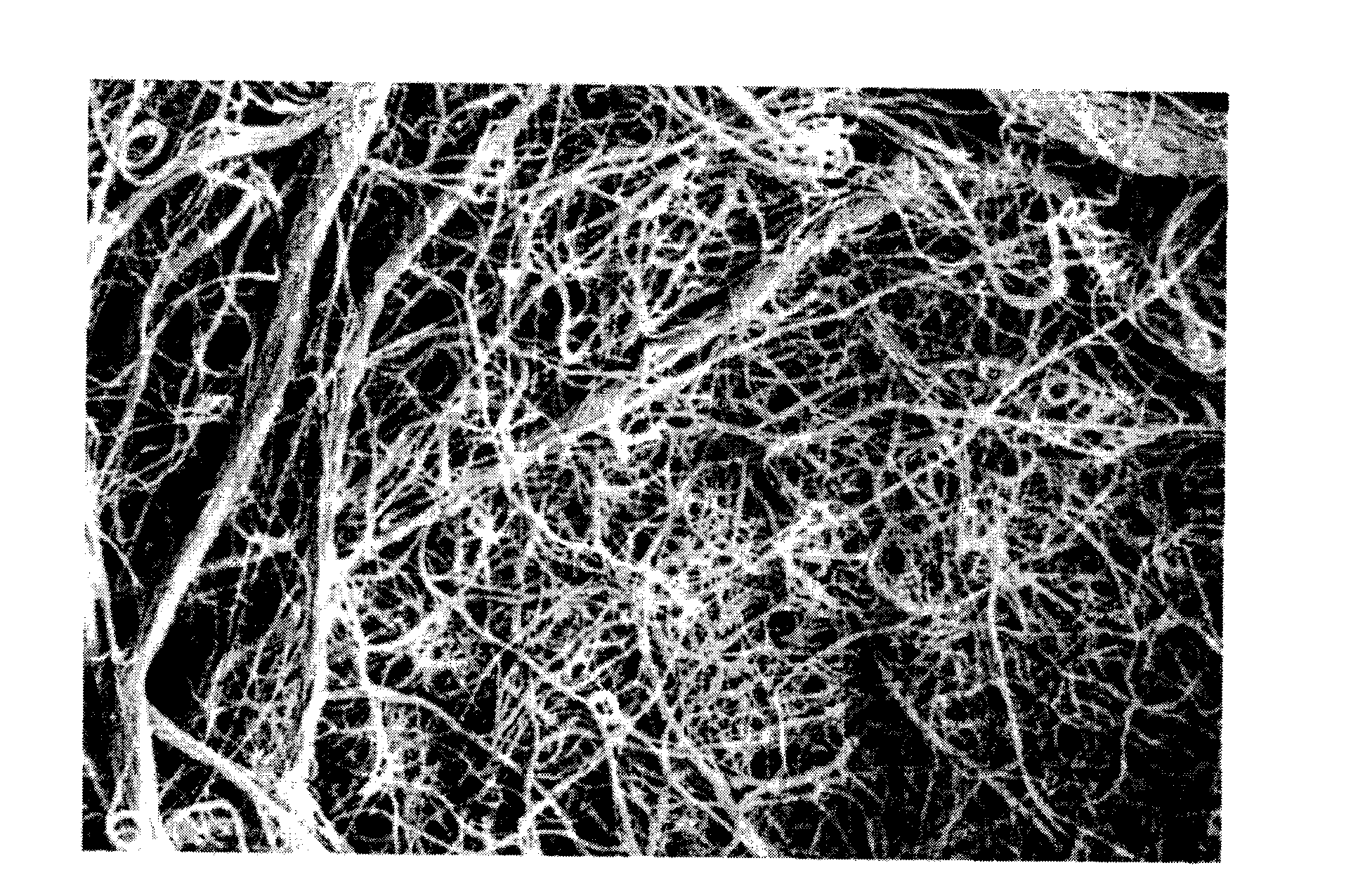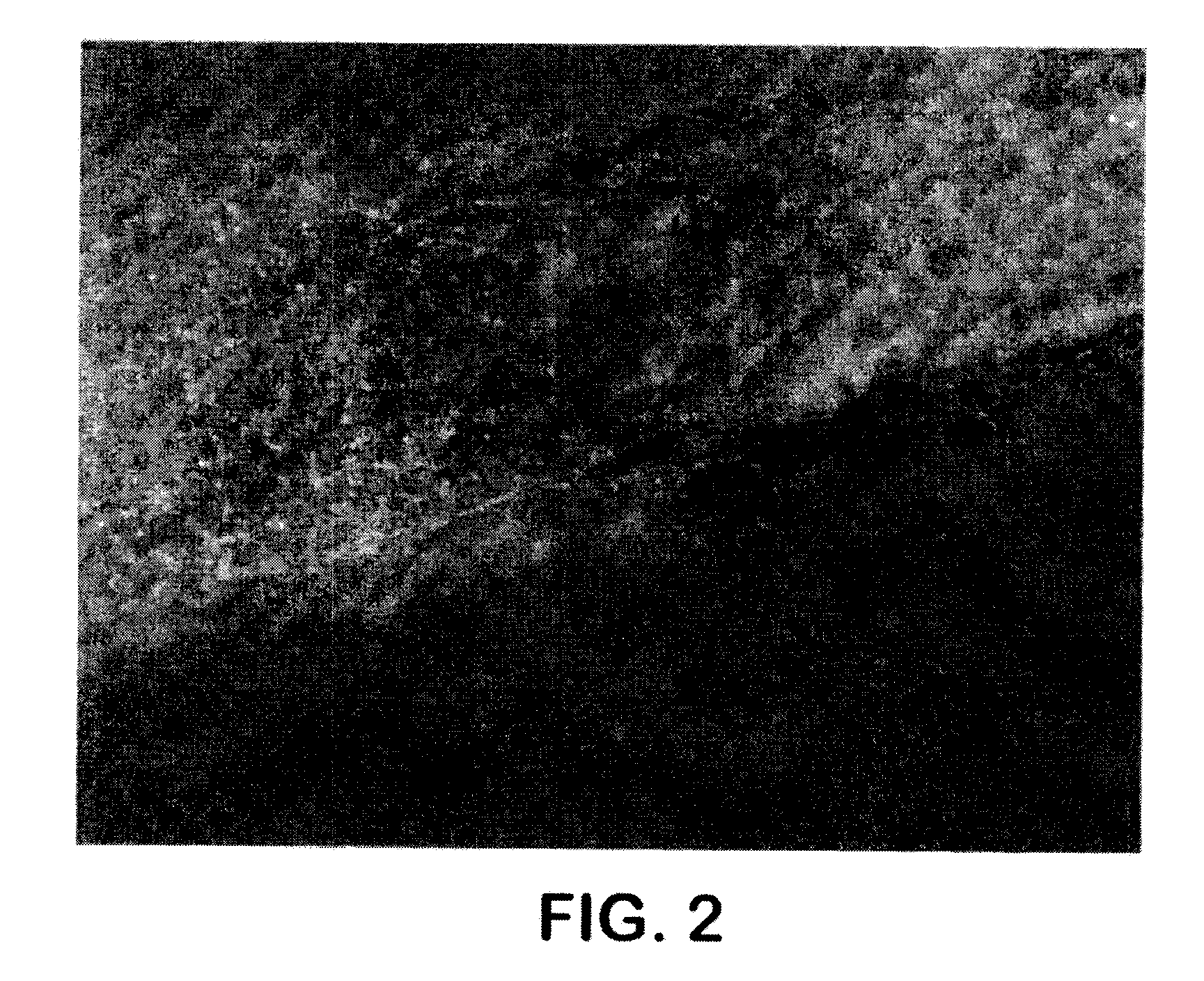Endophytic fungus and uses therefor
a technology of endophytic fungus and endophytic fungus, which is applied in the direction of biocide, peptide/protein ingredient, peptide source, etc., can solve the problems of increasing the risk of bsr, and the inability to control bsr with agrochemicals, etc., and achieves high stringency conditions. , the effect of high stringency conditions
- Summary
- Abstract
- Description
- Claims
- Application Information
AI Technical Summary
Benefits of technology
Problems solved by technology
Method used
Image
Examples
example 1
Discovery of the Muscodor strobelii Fungus (Isolate Designated as MB-8 Herein)
[0171]A novel endophytic fungus termed Muscodor strobelii has been discovered in a philodendron plant south of Kuala Lumpur in the University of Malaysia forest at Bangi. This fungus is one of a group of endophytic fungi that belong to a fungal genus known as Muscodor. Members of the Muscodor fungal genus typically have a white mycelium with intertwining hyphae. These hyphae make rope-like strands and have never been observed to produce any fruiting structures, including spores, of any type. Muscodor species may produce volatile biologically active products that can affect other microbes, insects and nematodes. The newly isolated Muscodor strobelii produces a composition of volatile organic compounds that is different from that of all other Muscodor species that have been described to date.
[0172]Muscodor strobelii was isolated as follows. Several small stems of Philodendron sp were taken from a plant growi...
example 2
Scanning Electron Microscopy Characterization of Muscodor strobelii
[0173]Scanning electron microscopy was performed on isolate MB-8 after procedures described by Castillo et al., 2005, Scanning 27:305-311. Agar pieces and host plant pieces supporting fungal growth were placed in filter paper packets then placed in 2% glutaraldehyde in 0.1 M sodium cacodylate buffer (pH 7.2-7.4) with Triton X 100, a wetting agent, aspirated for 5 minutes and left overnight. The next day they were washed in six 15 minute changes in water buffer 1:1, followed by a 15 minute change in 10% ethanol, a 15 minute change in 30% ethanol, a 15 minute change in 50% ethanol, five 15 minute changes in 70% ethanol, and were then left overnight or longer in 70% ethanol. They were then rinsed six times for 15 minutes in 95% and then three 15 minute changes in 100% ethanol, followed by three 15 minute changes in acetone. The microbial material was critically point dried, gold sputtercoated, and images were recorded ...
example 3
Growth and Storage of Muscodor strobelii
[0174]It was determined that MB-8 did not produce spores or any other fruiting bodies when several pieces of carnation leaves were placed on top of actively growing MB-8 to encourage spore production, and no such structures were observed after a week of incubation at 23° C. The fungus was also plated on several different media including Cellulose Agar (CA), Malt Agar (MA), and Corn Meal Agar (CMA) to determine if spore production of MB-8 would be displayed. With the exception of a slower growth rate on some of the media, no other characteristics of MB-8 appeared to be different, and no fruiting bodies or spores were observed.
[0175]Several methods were used to store the isolated fungus as a pure culture, one of which was the filter paper technique. The fungus was also allowed to grow on PDA, and then it was cut into small squares which were placed into vials containing 15% glycerol and stored at −70° C. The fungus was also stored at 4° C. by a...
PUM
| Property | Measurement | Unit |
|---|---|---|
| Fraction | aaaaa | aaaaa |
| Fraction | aaaaa | aaaaa |
| Power | aaaaa | aaaaa |
Abstract
Description
Claims
Application Information
 Login to View More
Login to View More - R&D
- Intellectual Property
- Life Sciences
- Materials
- Tech Scout
- Unparalleled Data Quality
- Higher Quality Content
- 60% Fewer Hallucinations
Browse by: Latest US Patents, China's latest patents, Technical Efficacy Thesaurus, Application Domain, Technology Topic, Popular Technical Reports.
© 2025 PatSnap. All rights reserved.Legal|Privacy policy|Modern Slavery Act Transparency Statement|Sitemap|About US| Contact US: help@patsnap.com



